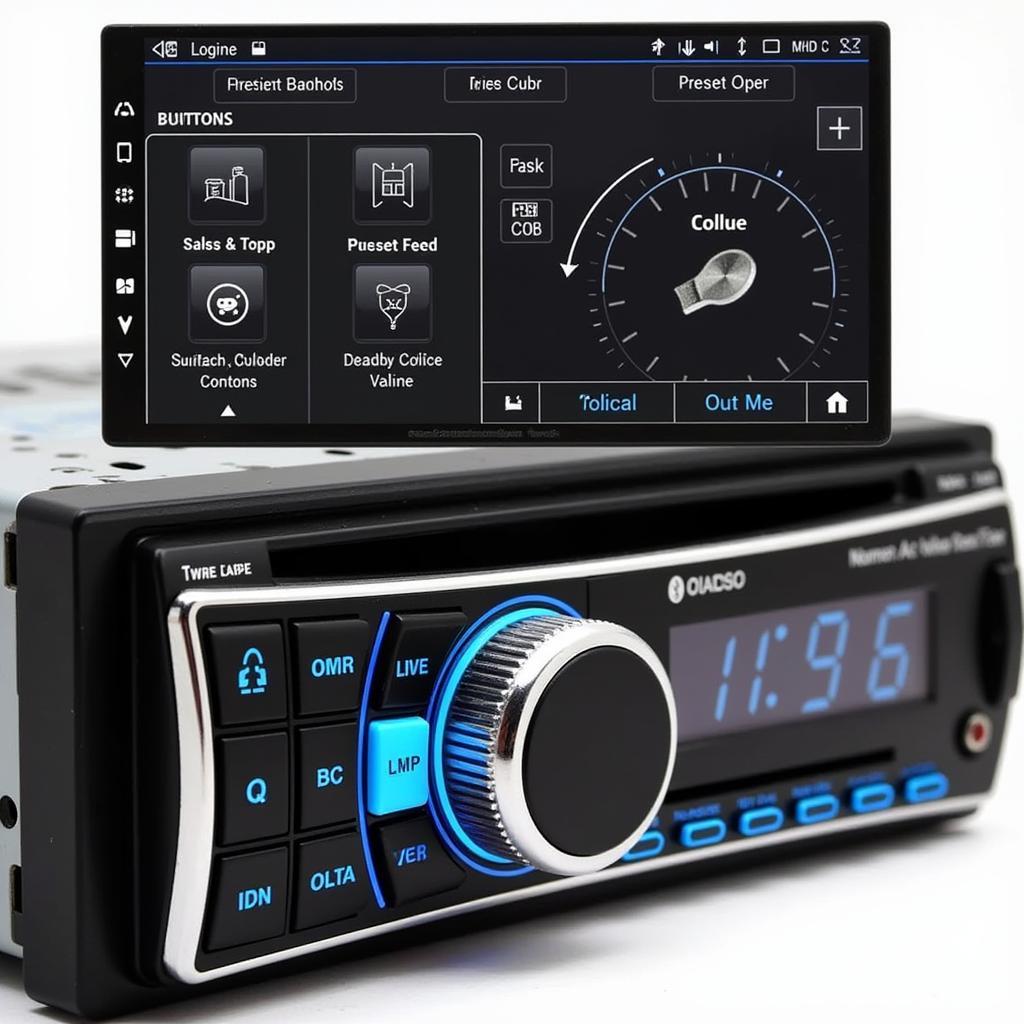Adaptive headlights are revolutionizing automotive lighting, offering improved visibility and safety. Coding a new adaptive headlight module can seem daunting, but with the right knowledge and tools, it’s a manageable process. This guide will walk you through the essential steps, considerations, and potential challenges involved in coding a new adaptive headlight module.
Understanding Adaptive Headlight Technology
Adaptive Front-lighting Systems (AFS) enhance visibility by pivoting the headlight beams to illuminate the road ahead based on steering angle, vehicle speed, and other factors. This dynamic adjustment provides a significant advantage over traditional fixed headlights, especially when navigating curves and corners. Several types of adaptive headlight systems exist, each with its own coding requirements. These include systems that pivot horizontally, vertically, or both, and even systems that project light patterns onto the road. Understanding the specific type of adaptive headlight module you’re working with is crucial for successful coding.
Preparing for Adaptive Headlight Module Coding
Before you begin coding a new adaptive headlight module, ensure you have the necessary tools and resources. This includes a compatible diagnostic scanner, the correct software for your specific vehicle make and model, and access to the appropriate coding data.  Essential Tools for Coding Adaptive Headlight Modules
Essential Tools for Coding Adaptive Headlight Modules
Gathering the Required Information
Identify the correct part number for the new adaptive headlight module and the vehicle’s VIN. This information is crucial for retrieving the correct coding data. Consult the vehicle’s service manual or an online database for compatibility information.
Choosing the Right Coding Software
Several diagnostic and coding software options are available. Selecting the right software depends on the vehicle make and model. Research compatible software and ensure it supports adaptive headlight module coding for your specific vehicle.
Step-by-Step Guide to Coding a New Adaptive Headlight Module
Once you’ve gathered the necessary tools and information, you can begin the coding process.
- Connect the diagnostic scanner: Plug the scanner into the vehicle’s OBD-II port.
- Launch the coding software: Open the software on your laptop and establish communication with the vehicle’s onboard computer.
- Enter vehicle information: Input the vehicle’s VIN and the part number of the new adaptive headlight module.
- Retrieve coding data: Download the appropriate coding data from the manufacturer’s server or an online database.
- Upload coding data: Transfer the coding data to the new adaptive headlight module using the diagnostic scanner and software.
- Verify coding: After the coding process is complete, verify the functionality of the adaptive headlights. Check for proper beam adjustment and responsiveness to steering input and vehicle speed.
Troubleshooting Common Coding Issues
Sometimes, issues can arise during the coding process. Here are some common problems and solutions:
- Incorrect coding data: Double-check the VIN and part number to ensure you’ve downloaded the correct coding data.
- Software compatibility issues: Verify that the coding software is compatible with your specific vehicle and adaptive headlight module.
- Communication errors: Check the connection between the diagnostic scanner, the vehicle, and the laptop.
- Module malfunction: If the module is faulty, it may not accept the coding data. Test the module to ensure it’s functioning correctly.
Why Professional Coding is Often Recommended
While coding a new adaptive headlight module is possible for DIY enthusiasts, it’s often recommended to seek professional assistance. Dealerships and specialized automotive repair shops have access to the latest software, training, and expertise to ensure proper coding and functionality. “Accurate coding is critical for the safety and performance of adaptive headlights,” explains John Smith, Senior Automotive Electrical Engineer at Advanced Auto Solutions. “Professional coding minimizes the risk of errors and ensures optimal headlight performance.”
Conclusion
Coding a new adaptive headlight module is a complex process that requires careful attention to detail. By following the steps outlined in this guide and having the right tools and knowledge, you can successfully code your new module. However, for optimal results and to avoid potential issues, seeking professional assistance is often the best course of action. Remember, properly functioning adaptive headlights enhance visibility and contribute to safer driving, making the coding process a worthwhile investment.
FAQ
- What is the average cost to have a new adaptive headlight module coded? The cost varies depending on the vehicle make and model and the labor rates of the repair shop.
- Can I code a used adaptive headlight module? Yes, but it’s crucial to ensure the used module is compatible with your vehicle and free from defects.
- How long does the coding process typically take? The coding process itself can take anywhere from a few minutes to an hour, depending on the complexity of the system.
- What are the benefits of adaptive headlights? Adaptive headlights improve visibility, especially on curves and in challenging weather conditions, enhancing safety.
- Do I need special tools to code an adaptive headlight module? Yes, you’ll need a compatible diagnostic scanner and coding software.
- What happens if the adaptive headlight module is not coded correctly? Incorrect coding can lead to malfunctioning headlights, potentially creating safety hazards.
- Can I drive with an uncoded adaptive headlight module? While technically possible, it’s not recommended as the headlights may not function correctly, impacting visibility and safety.


